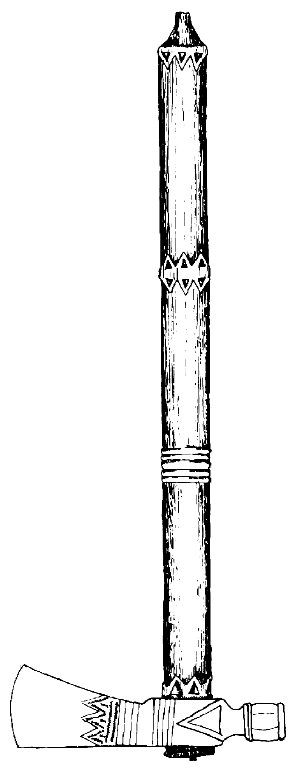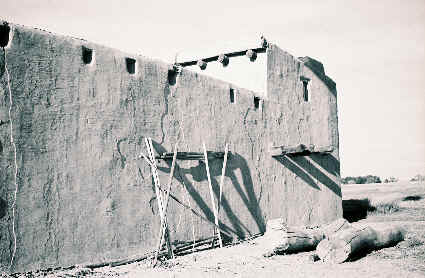|
||||||
| ...... |
"While at supper, a party of
men rode up, the foremost of whom shook hands with Hatcher. It was the
renown kit Carson, so celebrated as the companion and guide of colonel
Fremont. Without a desire to detract from Carson's well earned fame, I
can say, in genuine good feeling and full belief, that there are numbers
of mountain men as fearless and as expert as he, though to the reading
world little known, whose prowess in scalp taking and beaver trapping is
the theme of many campfires, and the highest admiration of younger
mountaineers." Lewis
Garrard
There are many names which come to mind when you think of the fur trade. People like Carson, Bridger, Glass and Colter have recognizable names and stories which go with the name. But if you put the well-known names of individuals who came west against the total list of trappers, traders and adventurers, it is a very small percentage. And in a way, this is a shame. For all who came west in the early 1800's have stories to tell and adventures well worth reading about. In this small space, let me tell you of two "lesser known" but just as important men, who had a part in the fur trade. Joseph Bissonette Dij Bijeau Is found as interpreter/guide for the Steven Long trip in 1819-1820 to the Rocky Mountains. (1) He said to have been repeatedly to the headwaters of the Platte and Arkansas Rivers while trapping. He knew several Indian languages (especially Crow), but Long found him living with the Pawnees, with whom he had stayed for about six years. Colonel Long describes him as "very adequate and faithful in the services of guide and interpreter from the Pawnee villages to here," and that he "Has candor and veracity". Along the way Joseph communicated religious and ceremonial ideas of the various Indian tribes to the whites. (2) In their travels he was a hunter, butcher, cook and veterinarian for the group of men. Just before leaving the group and returning to the Pawnee village, he draws an accurate map for Long's group to follow to the Verdigris and Grand River, which they found to be correct. Ettiene Provost lists Bijeau as a part of the Phillibert's trapping group in 1814 (3), and later with Chateau and DeMunn's company of men. The experience with Phillibert's trip was not a pleasant one, as the group was escorted to Santa Fe by 250 Mexican troops and kept under surveillance for 50 days. They were released, but lost all of their trapping equipment and furs. When the list of men arrested was made, Bissonet wrote only a "X" as his name. (11 other men, a few well known, show up on that list.) This man was out in the west well before many of the more popular men and led a very interesting life. But no one knows much about him. No pictures exist, no books were written about him, and no one knows where he is laid to rest or even how he died. What a shame! There are a few short biographies, a couple of small creeks and a even a valley named after him (in the form of Bijou) but if you were to ask the common mountain man today about him, most would say they never heard of him. The next is John Smith. A common name for a uncommon man. Far overshadowed by another Smith (Jedediah), but the name of this man should not be forgotten. John was born in Frankfort, Kentucky in 1810. He came west when he left his employer (a tailor) and went with a group of trappers. Smith spent the first winter with the Blackfeet and was given the nickname of "blackfoot" by other white men, but his real middle name was Simpson. After killing one of that tribe in an unknown dispute, he landed in a Sioux camp and while on a horse raiding trip to Bayou Salade (South Park), decided to stay there.
|
...... |
When Lewis Garrard met him he had a
Cheyenne wife, was about 30 years old and had a 10 year old boy named
Jack. (the boy's Cheyenne name was Wo-pa-Kan-ne.) He had developed a
reputation by that time which was feared by the Mexicans who, if they
ran into him on the trail, paid tribute to him with a percentage of
every trade shipment, no questions asked. The Mexican government didn't
appreciate this and even had a $500.00 bounty put on him by their
Governor, but no one tried to collect it. Like all mountain men in the
west at that time, he was described as clever but mean, cautious and
reckless and good yet evil.
During the time he spent in the west he was a trader for Bent's Fort, helped build Fort Mann, was an interpreter with the first Indian agency among the Cheyenne by Tom Fitzpratick (for which he made $25 a month), interpreted for the Fort Laramie treaty of 1863, dug gold in present-day Denver, helped build and live in the first cabin in Denver, accompanied Father DeSmet going east in 1851 and was known by sight and name by all who came west during the fur trade. It seems that many important men respected him and he claimed to have knowledge of the land between the petrified forest, Grand Canyon, up the Colorado River to the great Salt Lake, north to Coeur d'Alene country and the Yellow Stone area back to Bent's Fort. John Smith is a prime example of an important individual who lived well past the end of the fur trade and still had a prominent position in later times. One other interesting fact is that his wife and their son Jack were killed at the Sand Creek massacre. What a thing to happen to a person who was declared to be a "white friend of the red man". Mr. Smith, unlike Mr. Bijeau, turns up in a few well known books like Wah-to-yah and the Taos Trail (4) and Bent's Fort (5). As you can see these two men are well worth knowing and reading about. But there are many others who even well respected historians have forgotten or decided that they are not important enough to warrant inspection. To me, all who came west when it was wild, untamed and exciting deserve to be known. For it is not the famous that are heroes to me, but every single young camp keeper who lived long enough to be declared a seasoned hiverent, and rightly so! These men show the true spirit of the west, well before it became an item for dime novels and articles in eastern newspapers. (1) From Pittsburgh to the Rocky Mountains Stephen Long's journals, Fulcrum Books page 166. (2) Long's journal pages 246, 247 and 336. (3) Etienne Provost, Man of the Mountains, Jack Tykal, Eagles View, page 21. (4) Wah-to yah and the Taos Trail, Lewis Garrard, Oklahoma Press. (5) Bent's Fort, David Lavender, Bison Press.
_______________________ See you down the trail
|
...... | ||
|
|
|
|||||

 Mike
Moore, a staff writer on the western fur trade for "On
The Trail" magazine, has written for that magazine and
others. It took over five years to do the research and compile
the chapters. You may have seen an article by him in some of the
following magazines:
Mike
Moore, a staff writer on the western fur trade for "On
The Trail" magazine, has written for that magazine and
others. It took over five years to do the research and compile
the chapters. You may have seen an article by him in some of the
following magazines:

